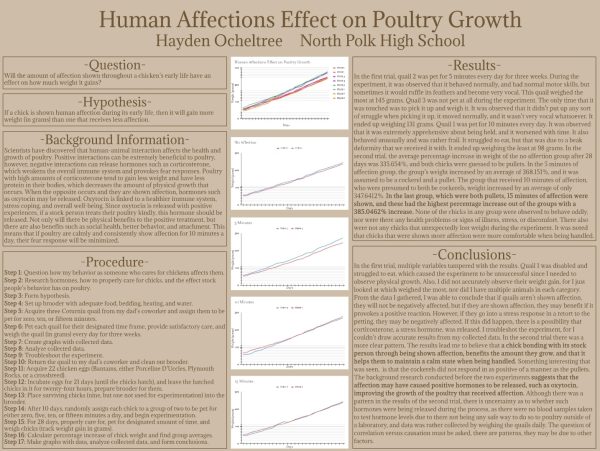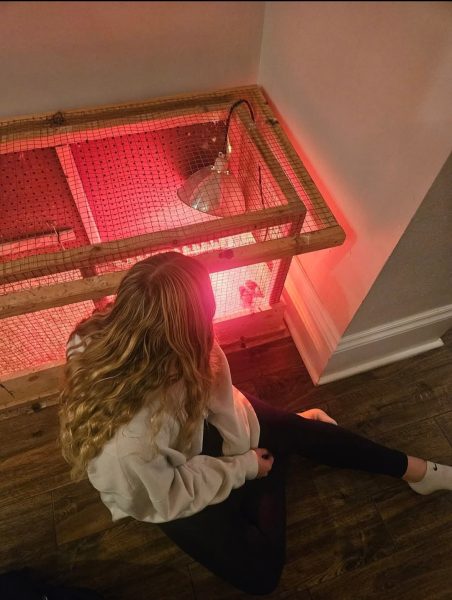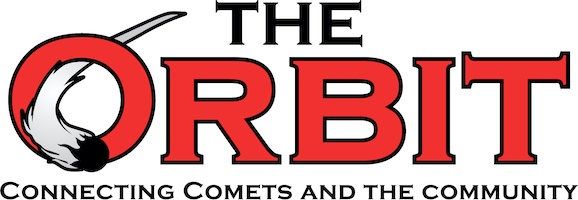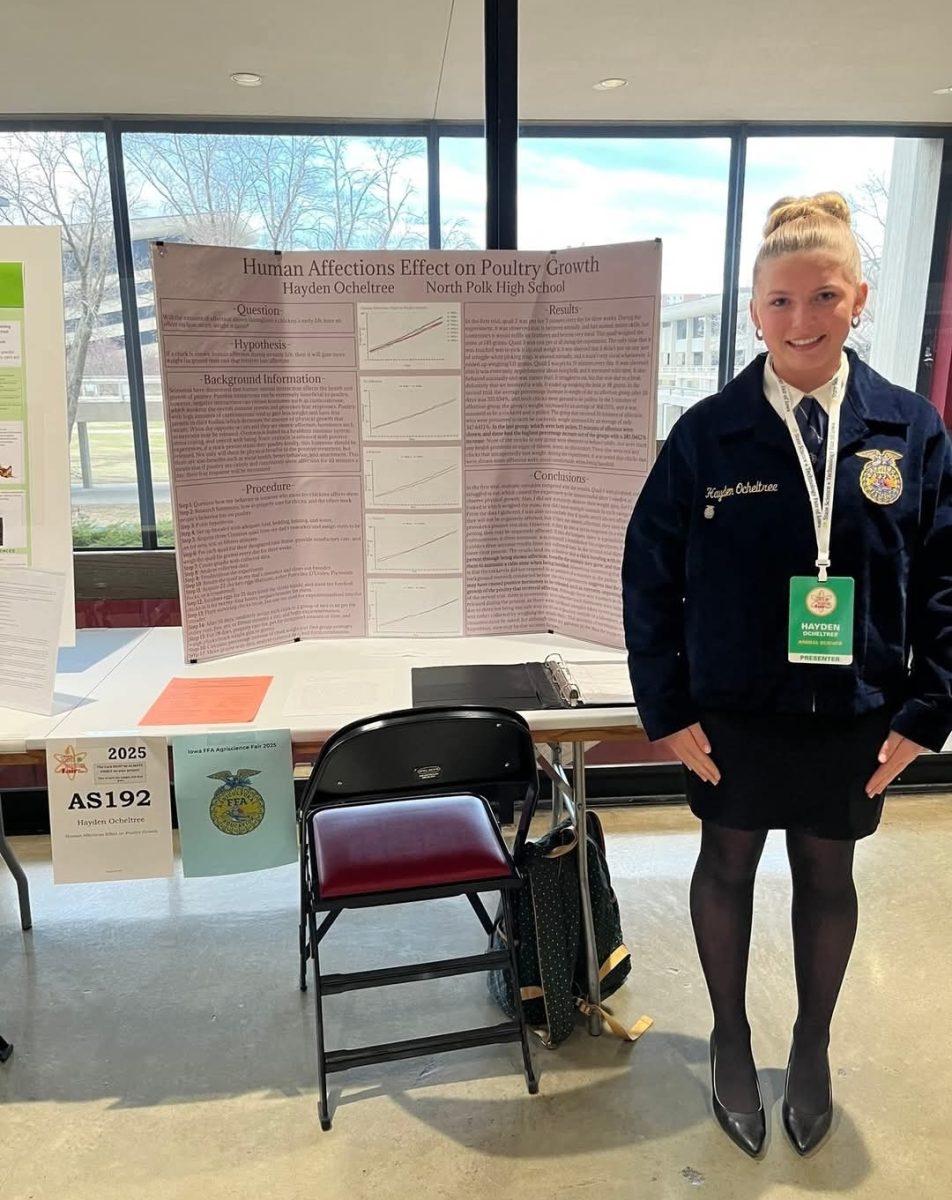On March 27-28, 10 students from North Polk High School participated in the State Science and Technology Fair of Iowa- an annual event organized to display high school projects across Iowa.
As described in a post from the North Polk Community School District Instagram post, “[t]he projects [included]: ‘pH Differences in Filtered Water,’ ‘Pets and Their Dominant Paw,’ ‘Iowa’s Biggest Problem: Agricultural Pollution,’ and much more.”
For freshman Hayden Ocheltree, she focused her project on “[a simulation of] the avian variation of the hormone oxytocin, which is called mesotocin. It is usually referred to as the “love hormone” in relation to poultry- domesticated birds raised for eggs, meat and feathers.
She explained that though this hormone is typically only studied in poultry in relation to the female reproductive system, she decided to take a different approach.
“I wanted to see if there was a correlation between higher mesotocin levels and weight gain,” Ocheltree explained.

This experiment consisted of attempting to simulate this hormone through petting chicks, and afterwards found that “ the groups that I petted more had a higher average percentage increase [of the hormone] than those that weren’t pet.”
Ocheltree expressed that the inspiration behind this project was due to the large scale and ongoing debate on whether convenience farming- and oftentimes cheaper farming method that prioritizes yield- or free-range is better for farm animals. Moreover, she explained wanting to note whether there is or is not human presence had any affect on the hormone levels of poultry.
Moreover, being a member of North Polk’s Future Farmers of America (FFA) program, Ocheltree explained that due to the importance of agricultural education, she was able to preserve through the challenging moments of her project- which she wished to share on a larger scale.
Throughout her experiment process, Ocheltree credits her parents, as well as her educators in helping her persist.
She painted the picture of the chicks and quail living in the corner of her dining room due to temperatures being too cold for them to be kept outside for months. Moreover, she explained that science teacher Aaron Dose helped with presentation matters, fellow science teacher Quinn Groff helping with logistical matters and Agriculture teacher Jamie Waddingham with “a lot of advice.”

Olcheltree’s hard work and dedication was seen to be a great success within the fair, as she “received an honorable mention in the category of high school animal science, a $1000 scholarship from Morningside University for excellence in agriculture and aviation, and…was an ISEF award winner.”
The award, which was only given to two other freshmen in the state, allows Ocheltree to be present in the International Science Fair in Ohio as an observer from May 10-16 along with Dose.
When asked about the future of her project, Ocheltree expressed she “ look[s] forward to hopefully extracting hormone samples in the future to see whether or not the pattern I observed was a matter of correlation versus causation. I also plan on examining how different stimulants affect the growth of chicks.”
She ended with a feeling of excitement to continue both her personal and academic growth journey, already seeing continued growth with this experience.
“[T]he biggest takeaway from the science fair was that I am capable. I felt very unsure of myself going into it, but hearing feedback from judges and further exploring my research with experts gave me so much confidence and encouraged me to keep going,” Ocheltree expressed.







